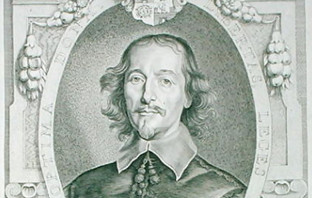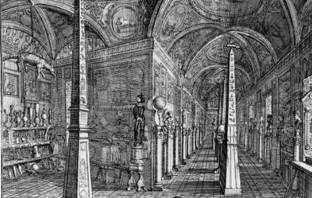Caspar Schott S.J. (1608-1666) is a remarkable representative of the passion for scientific knowledge that, in the first two thirds of the seventeenth century, possessed enough educated people across Europe as to create a new social entity – the Republic of Letters – the service of which became their primary loyalty. They did not know exactly where they were headed, nor did they particularly foresee the magnitude of their impact; what they did know with blazing conviction was that the long tradition of philosophical theorising without the support of quantitative experiment was bankrupt. As Schott’s mentor and hero Athanasius Kircher says: ‘All philosophy unless grounded in experiment is empty fallacious and useless…Experiment alone is the arbiter of disputed questions, the reconciler of difficulties and the one teacher of the truth’1. This common conviction bonded scholars of disparate religious and philosophical outlooks to the citizenship of a republic of learning.
Schott himself was a refugee from the Thirty Years War and spent the years 1633-1652 in a typical Jesuit ministry, preaching and teaching in Sicily. His life was transformed by two strokes of good fortune. The first was that Kircher, his old teacher at Würzburg, and now a star of the Jesuit Order based at Rome, summoned him to be his assistant in 1652. Here he gathered the material for his first book, Mechanica Hydraulico-pneumatica.

Otto von Guericke, 1602-86, by Anselmus van Hulle, in Ottonis de Guericke Experimenta Nova (ut vocantur) Magdeburgica de Vacuo Spatio p. XVII
The second stroke of good luck came two years later, when he was dispatched back to Würzburg to ease the fraught relationship between the Order and the influential Elector of Mainz and Bishop of Würzburg, Johann Phillip von Schönborn. Schönborn had recently returned from the Imperial Diet of Regensburg where he had met the representative of Magdeburg, Otto Gericke, purchased from him his newly invented vacuum pump, and passed it on to the Jesuit College of which Schott was now a member. Schott’s first extant letter to anyone other than Kircher was to Gericke on June 4th 1656, seeking clarification of the working of this apparatus. For the next decade, until his death in May 1666, Schott was a phenomenally industrious and prolific disseminator of scientific and technological developments, writing no fewer than eleven works, totalling more than 7000 pages.
Many of his letters were written in support of his work as an author. His known correspondence comprises some 120 letters, including fragments, written between 1652 and 1666. About half are original manuscripts and the remainder are recorded in printed sources: either in his own works or in Lubienietski’s Theatrum Cometicum. As two of these letters were unearthed by Dr Iva Kelkova in Basle as recently as a few month ago, it is certainly possible that more will yet come to light. His known correspondents number about 30, and with whom he shared the wide range of his interests, including the vacuum, horology, magnetic compasses, quadrature problems in geometry, automated language translation, cryptography, innovations in fortress defence, developments in artillery, perpetual motion machines, mechanically powered ships, surveying equipment, magic squares, developments in optics, the 1664/5 comet and municipal water engineering.

Kircher’s Museum in Rome, by Giorgio di Sepibus, in Romani collegii Societatis musaeun celeberrimum, Amsterdam 1678.
Kaspar Schotts Netzwerk by Professor H. J. Vollrath, Thomas Conlon and Alban Müller S.J. presents an overview of his international network of correspondents, and provides transcriptions from manuscript of his correspondence with Phillip Ernst Vegelin and J. M. Faber and annotated translations into German. Early Modern Letters Online – EMLO – is today the natural repository for Schott’s correspondence and it is hoped that within the next year the entire corpus of his letters will become available on EMLO with the maximum of scholarly transparency, that is, in so far as the necessary permissions and copyright considerations allow, reproductions of the sources, transcriptions and annotated translations into English.
The volume can be purchased here and a preliminary sample of Schott’s letters on EMLO can be found here, with images, transcriptions and translations by Thomas E. Conlon and Hans-Joachim Vollrath. Please be aware that EMLO is currently in Beta. The Schott correspondence will benefit from further C of K developments through 2014, including trialling EMLO’s prototype quick-input webform for collecting metadata from the remaining letters, front-end redesign to include full partner catalogue accreditation pages, and further down the line enhanced visualisation tools. For C of K project updates, including alerts on new correspondences as they become available towards the end of the year, follow on Twitter or subscribe to the C of K Mailing List.
1. Magnes sive de arte magnetica (1641), p.570, translation by T. E. Conlon. See also the forthcoming catalogue of Kircher’s correspondence, to be released on EMLO in 2014.

